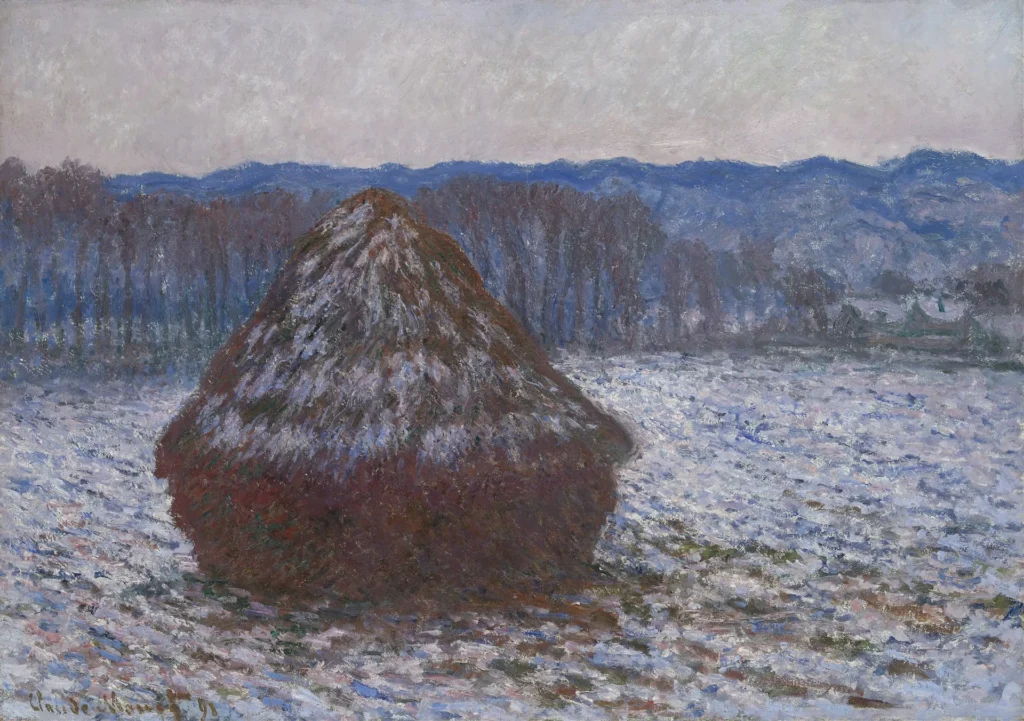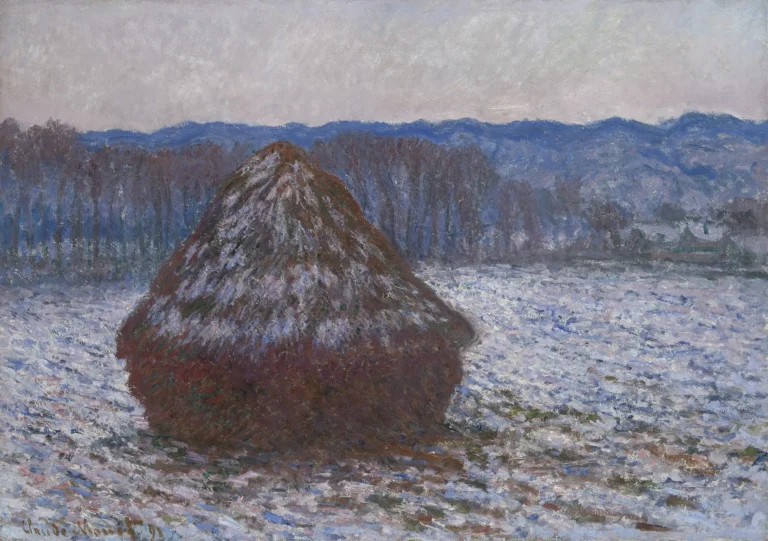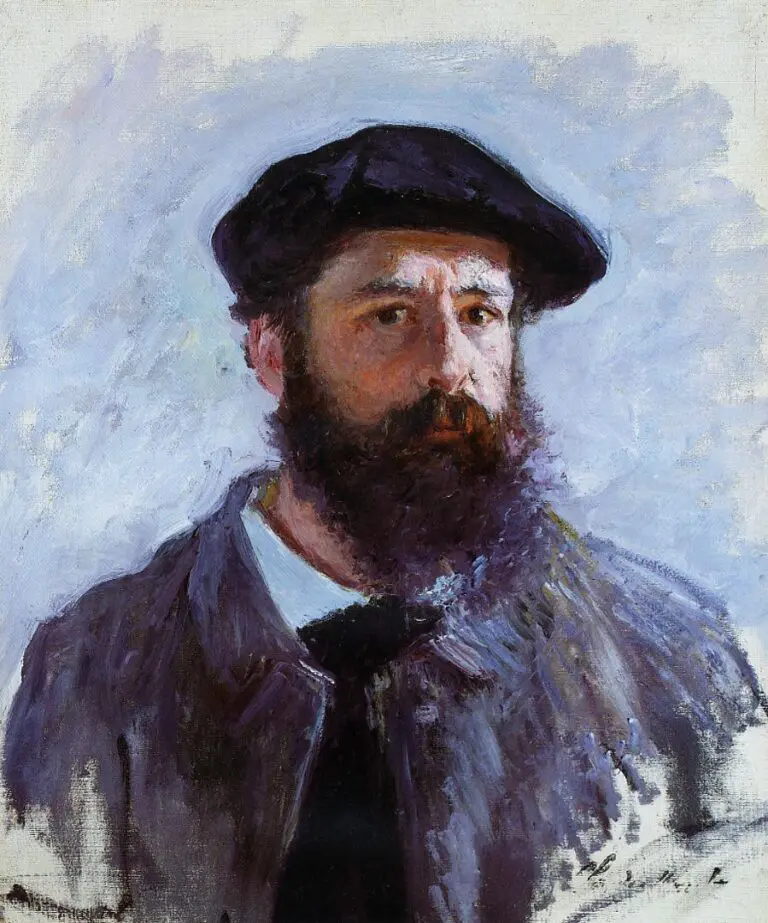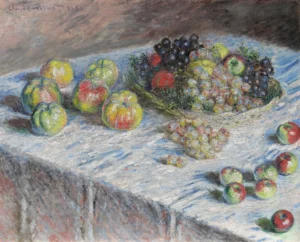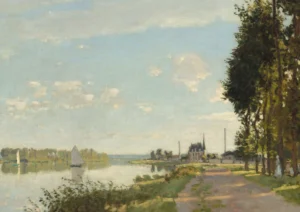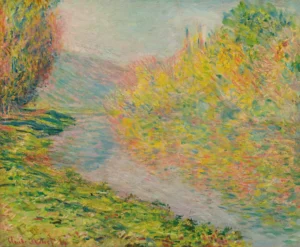Haystacks (1890-1891)
Monet's "Haystacks" or "Stacks of Wheat" series is a pioneering work that illustrates the same agricultural subject in various lighting and atmospheric conditions. Painted between 1890 and 1891, these 25 canvases depict the haystacks located near his home in Giverny, France. Using short, dense brushstrokes, Monet focuses on the enveloping light rather than the stacks themselves, showcasing a vibrant narrative of rural prosperity and the delicate balance between nature and industrialization.
1890 - 1891
About the Artwork
The story of Monet's "Haystacks" series begins in the fields of Giverny, where he was inspired by the humble yet profound beauty of haystacks owned by his neighbor, Monsieur Quéruel. Between September 1890 and April 1891, Monet meticulously painted these formations under diverse weather conditions, a process that emphasized his commitment to capturing the very essence of light. This exploration culminated in the groundbreaking exhibition at Galerie Durand-Ruel in May 1891, which solidified Monet's status as a leader of the Impressionist movement. "Grainstack (Sunset)", a standout piece from this series, highlights the mesmerizing interplay of color and light that defines Monet's work while encapsulating the agricultural heritage of France.
Did You Know
Liked what you see? Add it to your collection.
Enjoyed reading? Share it.
... continued
Subject and Location
The paintings depict stacks of harvested wheat, possibly barley or oats, located in the fields near Monet's home in Giverny, France. These stacks belonged to Monet's farmer-neighbour, Monsieur Quéruel.
Series and Technique
Monet painted a total of 25 canvases for this series, capturing the same subject under various lighting and weather conditions. He began painting in late September or early October 1890 and continued for about seven months. Monet's technique involved using short, dense brushstrokes and a focus on the 'enveloppe' – the atmosphere and light surrounding the stacks – rather than the objects themselves.
Symbolism and Cultural Significance
The stacks of wheat were not just mundane subjects but carried significant cultural and symbolic meanings. They represented the fertility of the land, the material wealth of local farmers, and the region's prosperity. They also symbolized the persistence of rural traditions in the face of increasing industrialization and urbanization.
Exhibition and Impact
In May 1891, Monet exhibited 15 of these canvases at the Galerie Durand-Ruel in Paris, which was a critical and financial success. This exhibition marked a breakthrough in Monet’s career and in the history of French art.
Specific Painting: "Grainstack (Sunset)"
One of the paintings from this series, "Grainstack (Sunset)," is housed at the Museum of Fine Arts, Boston. It was painted in 1891 and features a stack of wheat at sunset. The painting is notable for its exploration of light, color, and form, and it symbolizes the traditional themes of agricultural fertility and local prosperity.
Dimensions and Medium
The paintings in the series vary in size, but a typical example is around 60 cm x 100 cm (23 5/8 in x 39 3/8 in). They are all oil on canvas.




